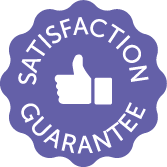Do you know what Napoleon, Leonardo da Vinci, Thomas Edison, John F. Kennedy, Margaret Thatcher, and Winston Churchill had in common? Beyond being famous for their respective roles in history, all of them were serious about napping. Could napping have played a part in their successes? Perhaps. Research has shown a wide variety of benefits from a simple siesta:
- Naps have been shown to improve alertness and performance in emergency department health professionals, as well as with first-year medical students.
- Research from Nasa showed that pilots who took a 26 minute “Nasa nap” in flight performed 34% better and were 54% more alert.
- A 2008 study showed that naps are better than caffeine when it comes to improving verbal memory, motor skills, and perceptual learning.
- Another 2008 study showed a nap can improve your focus and ability to concentrate.
- Research suggests naps help improve your emotional regulation – like increasing your ability to cope with frustration and reducing tendencies to be impulsive.
- Naps can help you make better decisions and even improve your ability to learn while on the job.
- Research shows naps can reduce stress and strengthen the immune system.
Now, not just any old nap will deliver these rewards. Sleep too long and you’re going to run into problems like sleep inertia, which makes you feel groggy and disoriented. Even worse, you could mess with your ability to sleep at night, and that can result in too many bad things to count. (Here are 25 terrifying side effects of sleep deprivation that’ll scare you to sleep.)
In fact, humans are hardwired to nap. The classic midday slump isn’t from your morning caffeine wearing off – it’s human physiology. Humans have an internal clock, known as the circadian rhythm, which controls our sleep-wake cycle. Every 24-hour cycle, our bodies’ sleep-drive kicks into overdrive twice: once between 1pm and 3pm and again from about 2am to 4am (although it varies depending on if you’re a Night Owl or an Early Bird).
So, stop denying biology! Feed the need! And, do it right using these 7 expert tips for the best power nap ever.
1 – Schedule your perfect nap at the right time.
Dr. Sara C. Mednick, Associate Professor of Psychology at the University of California, Riverside and author of the book, “Take a Nap! Change your Life,” says that the best time to nap depends on when you wake up. For example, early risers who wake up at 5:00 a.m. should nap at 1:00 p.m., while those who wait to wake at 10:00 a.m. should try to nap around 3:00 p.m. She says this is the time when you are in a “perfectly balanced state in which REM and slow-wave sleep are equally proportioned, and where ‘The Ultimate Nap’ occurs.” Use Dr. Mednick’s interactive Nap Wheel to find your sweet spot.
2 – Kick back a “napuccino.”
It sounds completely contradictory, but a shot of caffeine immediately before a nap improves the power of your power nap. Researchers in the U.K. were studying ways to prevent people from falling asleep at the wheel and they found that drinking a caffeinated beverage and immediately napping for 30 minutes worked better than either method alone. “The reason it works so well is because it takes around 20 minutes for the body to respond to the effects of caffeine,” writes Jeff Mann, the founder and editor of Sleep Junkies. “By taking a short nap immediately after consumption, the stimulant effect kicks in just as you are waking up. Not only will you feel revived from your power nap, you’ll also have the added benefit of the caffeine boost.”
3 – Find a good spot to rest your weary head.
Napping at work might not be practical for everyone, but there are some things you can do to squeeze one in. How often do you eat lunch at your desk? That’s not really a lunch break. Go ahead and eat at your desk, but take a real break when it’s your perfect nap time. Ideally, find a place where you can lie down or recline. An empty office, your car, a quiet corner, or maybe even the janitor’s closet (after you’ve offered cookies and a heads-up).
Next, make your environment as sleep-conducive as possible to make it easier to conk out and to get the full benefits from your snooze. Make it as dark as possible, use a white noise app and noise-canceling headphones or earplugs. Rachel Salas, M.D., associate professor of neurology at Johns Hopkins Medicine, recommends an eye mask, too. "Light can pass through the eyelids and still be alerting." Temperature is also important. About 68 or 69 degrees Fahrenheit is ideal, Salas explains on Self.com. "Might not be easy to do at work," she concedes, but a blanket or lighter change of clothes can help you adjust.
4 – Give yourself a 30-minute limit.
James Maas, former Cornell psychology professor turned sleep guru, coined the phrase "power nap," so he should know best how long the perfect one should be. A proper power nap, Maas tells Adam Bluestein for Inc., is short --15 to 20 minutes, "long enough to rejuvenate, but not make you groggy or give you insomnia later." Keeping it under 30 minutes delivers you into the ideal Stage 2 sleep. “If you take it longer than 30 minutes, you end up in deep sleep,” says Dr. Michael Breus, aka The Sleep Doctor. “Have you ever taken a nap and felt worse when you woke up? That’s what’s happening — you’re sleeping too long and you’re going into a stage of sleep that’s very difficult to get out of.”
5 – Let your stress go.
The “4-7-8” breathing method is championed by the renowned Dr. Andrew Weil – and many claim it helps them fall asleep in just a few minutes. Here’s how he explains doing it:
Place the tip of your tongue against the ridge of tissue just behind your upper front teeth, and keep it there through the entire exercise. You will be exhaling through your mouth around your tongue; try pursing your lips slightly if this seems awkward.
- Exhale completely through your mouth, making a whoosh sound.
- Close your mouth and inhale quietly through your nose to a mental count of four.
- Hold your breath for a count of seven.
- Exhale completely through your mouth, making a whoosh sound to a count of eight.
- This is one breath. Now inhale again and repeat the cycle three more times for a total of four breaths.
Note that with this breathing technique, you always inhale quietly through your nose and exhale audibly through your mouth. The tip of your tongue stays in position the whole time. Exhalation takes twice as long as inhalation. The absolute time you spend on each phase is not important; the ratio of 4:7:8 is important.
6 – Get a wake-up call.
“Setting an alarm is really helpful for napping,” says Dr. Janet Kennedy, PhD, clinical psychologist and founder of NYC Sleep Doctor. “It can be hard to fall asleep if you are worried about whether you will wake up at the right time. Setting an alarm takes the pressure off.” Try a progressive alarm that wakes you up gently rather than something that jolts you back into your busy day.
7 – Wake up the right way.
After the perfect power nap, reach peak rejuvenation with a healthy dose of sunshine. Your circadian rhythm follows the cycle of light and dark each day – releasing the sleep hormone melatonin as the sun goes down and stopping production during the light of day. General indoor light and darkness can have a similar effect, so after being in the black for your nap, perk up your system with some bright, happy, healthy light.
Now that you’re ready to be the ultimate power napper, we urge you to remember: Even the best nap isn’t an okay substitute for a good night’s sleep (nothing truly is). A good night’s sleep has superpowers that far exceed the power of a power nap.
Go forth and reap the rewards of both!





















